Tom Szwagier
Parsimonious Gaussian mixture models with piecewise-constant eigenvalue profiles
Jul 02, 2025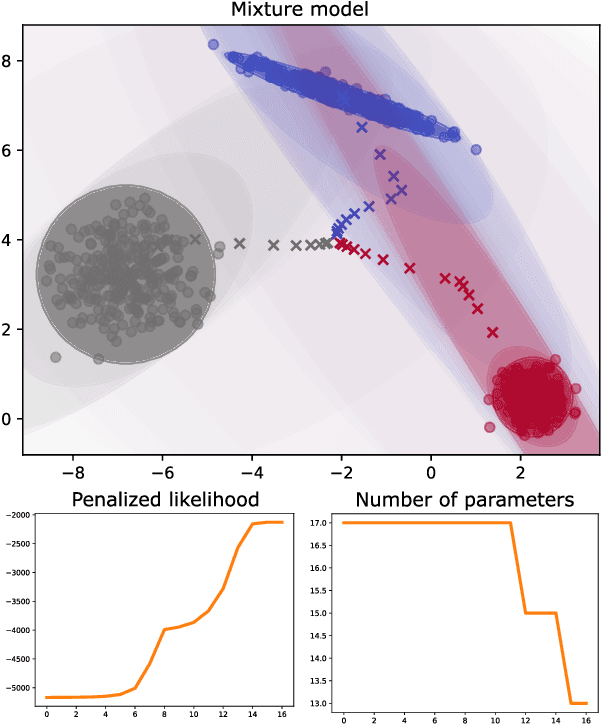



Abstract:Gaussian mixture models (GMMs) are ubiquitous in statistical learning, particularly for unsupervised problems. While full GMMs suffer from the overparameterization of their covariance matrices in high-dimensional spaces, spherical GMMs (with isotropic covariance matrices) certainly lack flexibility to fit certain anisotropic distributions. Connecting these two extremes, we introduce a new family of parsimonious GMMs with piecewise-constant covariance eigenvalue profiles. These extend several low-rank models like the celebrated mixtures of probabilistic principal component analyzers (MPPCA), by enabling any possible sequence of eigenvalue multiplicities. If the latter are prespecified, then we can naturally derive an expectation-maximization (EM) algorithm to learn the mixture parameters. Otherwise, to address the notoriously-challenging issue of jointly learning the mixture parameters and hyperparameters, we propose a componentwise penalized EM algorithm, whose monotonicity is proven. We show the superior likelihood-parsimony tradeoffs achieved by our models on a variety of unsupervised experiments: density fitting, clustering and single-image denoising.
Nested subspace learning with flags
Feb 09, 2025Abstract:Many machine learning methods look for low-dimensional representations of the data. The underlying subspace can be estimated by first choosing a dimension $q$ and then optimizing a certain objective function over the space of $q$-dimensional subspaces (the Grassmannian). Trying different $q$ yields in general non-nested subspaces, which raises an important issue of consistency between the data representations. In this paper, we propose a simple trick to enforce nestedness in subspace learning methods. It consists in lifting Grassmannian optimization problems to flag manifolds (the space of nested subspaces of increasing dimension) via nested projectors. We apply the flag trick to several classical machine learning methods and show that it successfully addresses the nestedness issue.
Generalizable and Robust Deep Learning Algorithm for Atrial Fibrillation Diagnosis Across Ethnicities, Ages and Sexes
Jul 20, 2022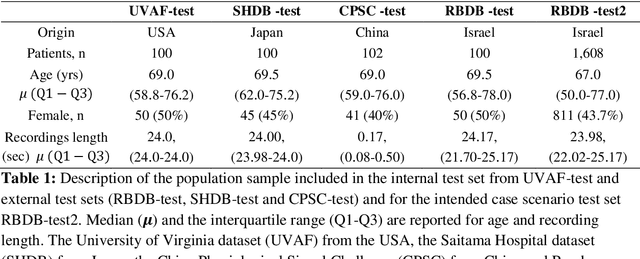
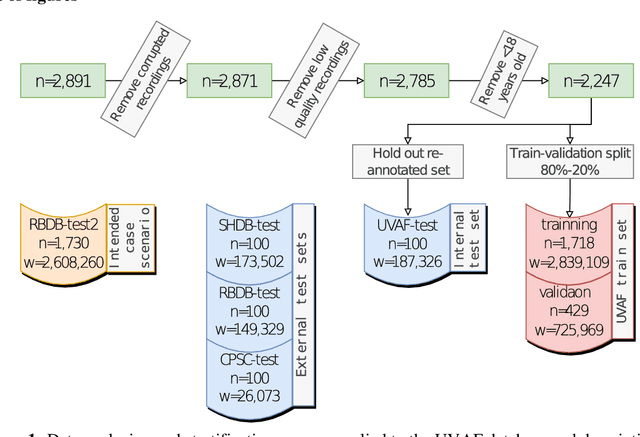
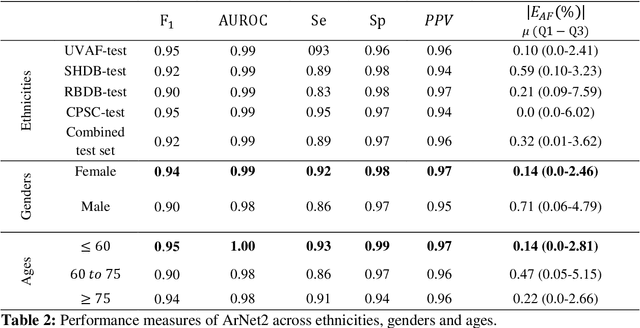
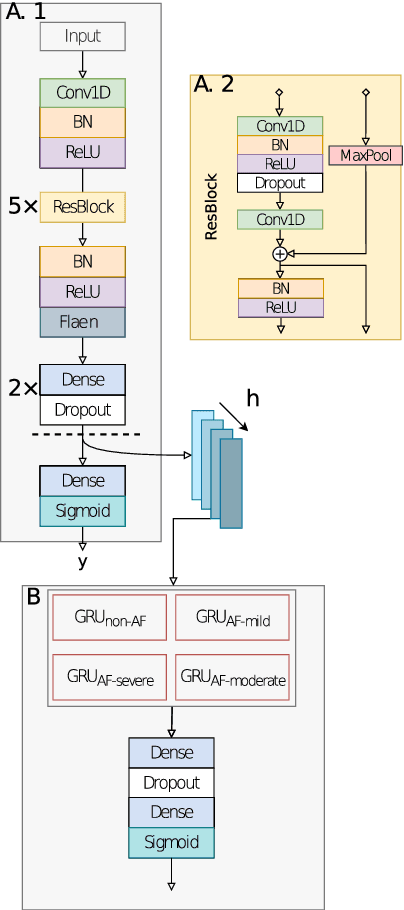
Abstract:To drive health innovation that meets the needs of all and democratize healthcare, there is a need to assess the generalization performance of deep learning (DL) algorithms across various distribution shifts to ensure that these algorithms are robust. This retrospective study is, to the best of our knowledge, the first to develop and assess the generalization performance of a deep learning (DL) model for AF events detection from long term beat-to-beat intervals across ethnicities, ages and sexes. The new recurrent DL model, denoted ArNet2, was developed on a large retrospective dataset of 2,147 patients totaling 51,386 hours of continuous electrocardiogram (ECG). The models generalization was evaluated on manually annotated test sets from four centers (USA, Israel, Japan and China) totaling 402 patients. The model was further validated on a retrospective dataset of 1,730 consecutives Holter recordings from the Rambam Hospital Holter clinic, Haifa, Israel. The model outperformed benchmark state-of-the-art models and generalized well across ethnicities, ages and sexes. Performance was higher for female than male and young adults (less than 60 years old) and showed some differences across ethnicities. The main finding explaining these variations was an impairment in performance in groups with a higher prevalence of atrial flutter (AFL). Our findings on the relative performance of ArNet2 across groups may have clinical implications on the choice of the preferred AF examination method to use relative to the group of interest.
 Add to Chrome
Add to Chrome Add to Firefox
Add to Firefox Add to Edge
Add to Edge